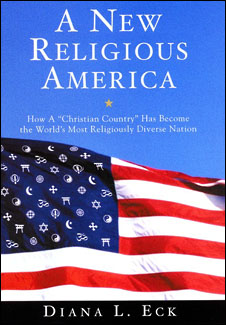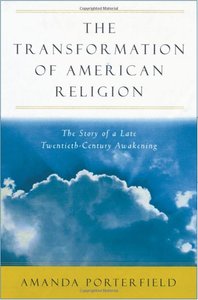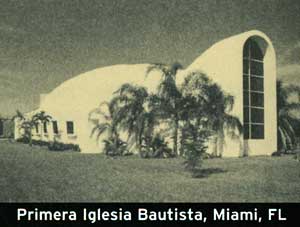
A New Religious America:
How a Christian Country Has Become the World’s Most Diverse Nation
by Diana L. Eck
HarperSanFrancisco, 2001
320 pp.; $26.00 (cloth)

The Transformation of American Religion:
The Story of a Late-Twentieth-Century Awakening
by Amanda Porterfield
Oxford University Press, 2001
262 pp.; $27.50 (cloth)
Our ways of writing, interpretive stances, and beliefs are inscribed by larger cultural contexts. Diana Eck, in her excellent book A New Religious America, handles beautifully the tug and play of shifting cultural stories in her account of religion unfolding in America. Amanda Porterfield, in The Transformation of American Religion, seems to understand less well the advantages of looking through more than her own interpretive lens, in her case a lens that views Protestant Christianity as absolutely foundational to the transformation of religious life in America. While nominally tackling the same question—how has American religious life changed over time?—Eck’s answers are more widely researched, better informed, and, ultimately, more profound.
Since 1991, Diana Eck, a professor of religion at Harvard University, has directed The Pluralism Project, a team of student and faculty researchers devoted to documenting the multi-religious and multicultural practices and beliefs of American society. Eck’s book, which profiles the American forms of Buddhism, Hinduism, and Islam, among other traditions, relies on much of the data that these researchers have gathered. Through her cogent analysis and synthesis of religious trends and practices, Eck has compiled an astonishing portrait of a country whose immense demographic changes have contributed to its religious diversity.
As Eck argues, the passage of the Immigration and Naturalization Act in 1965 must be seen as instrumental to the formation of the current religious landscape. There are now more Muslims than Episcopalians or Presbyterians in the United States, and as many Muslims as there are Jews (about six million). The percentage of foreign-born Americans is greater than it has ever been, with the fastest-growing groups being Hispanic and Asian. Between 1990 and 1999, the Asian population grew a startling 43 percent, to 10.8 million, and the Hispanic population grew 38.8 percent, to 31.3 million. These demographics are among the first serious challenges to the dominant cultural myth that understands America as still fundamentally Christian.

Such cultural changes have not come without resistance.A New Religious America includes stories of misunderstanding and violence in American communities confronted with an influx of unfamiliar people. Eck does an excellent job of highlighting the racism and xenophobia that often underlie zoning struggles, temple burnings, and personal attacks. However, she also details the ultimate triumph of these new practitioners as they struggle to integrate with local groups. As zoning requirements make common ground with places of religious practice, local communities are transformed.
The source of Eck’s claims—the data collected by The Pluralism Project—gives her account credibility and balance. Owing to her ambitious and comprehensive methods of data collection, we learn in detail about some of the architectural markers of this new religious pluralism (temples, mosques, Sikh gurdwaras), and about the ways in which technologies (including telephones, the Internet, and faxes) allow new immigrants a more genuinely bicultural existence.
Eck’s chapter on Buddhism includes descriptions of the kinds of Buddhist temples and practices thriving in America today. Eck tells us that Los Angeles, for example, has the most complex Buddhist population in the world, made up of not only the American convert community but also the whole range of Buddhist immigrants, from Sri Lanka to Korea. In addition, Eck provides detailed discussion of Chinese, Thai, Tibetan, Vietnamese, and Japanese Buddhism in America, as well as the Vipassana movement. Again, the mix of personal observations, theoretical grounding, and sound historical knowledge makes this account of Buddhism not only marvelously readable but informative as well.
Early in Amanda Porterfield’s The Transformation of American Religion, she footnotes Diana Eck, quoting Eck’s remarks at a 1996 conference on spiritual life. A speaker compared Catholic spirituality to “the mind of clear light” as understood in the Tibetan Buddhist tradition. In the discussion that followed, Eck asked that participants develop “a new theologicallanguage … so that Christians do not go on discussing the whole world of spiritual reality using just Christian terms.” Porterfield herself might have done better if she had heeded Eck’s call.
In its account of the changing face of America’s religious landscape, The Transformation of American Religion relies on Porterfield’s own personal histories, sometimes narrow interpretations, and occasionally tangential reflections on religious traditions in dialogue. She offers three different statements of her book’s purpose in her introduction. First, she says, “this is a book about the endurance of certain Protestant attitudes, ideas, and principles and their profound influence in the shaping of American religious thought.” Second, she says, it is “about the remarkable decline in the authority Protestant people and institutions claim in the larger culture.” Finally, Porterfield claims that her book will show “how the Puritan intellectual tradition contributed to the religious pluralism and the advancement of religious freedom in the late twentieth century.” In the end, she ascribes too much power to the historical antecedents of Protestantism, especially Puritanism, finding, as she does, a Protestant influence on virtually every religious tradition as it entered this country. Her thesis is unpersuasive, backed as it is by her often reflexive and recursive conclusions.
Porterfield’s discussion of Buddhism construes its entrance into American religious dialogue as part of “deconstructing selfhood.” Taking a broad and superficial understanding of Derrida’s theory of deconstructionism, Porterfield connects an American “cultural preoccupation with personality” with a Christian personalism. In turn, she claims this prepared the way for Buddhist ideas in this country. Giving but passing reference to the important contributions of such American Buddhists as Rick Fields, she offers a cursory map of American Buddhist practice. She discusses more substantially, though, the connections between psychotherapy and Buddhism.

Porterfield’s chapter on Buddhism ends with a discussion of “Jewish Buddhism,” in which the author explains that “if liberal Protestantism and post-Protestant philosophical theology played the leading role in defining the intellectual context in which Buddhism came to popularity in the United States, Jews often took the lead in the subsequent development.” Connecting the Yiddish mensch (honorable, decent person) to what she sees as a dimension of menschlichkeit in American Buddhism, Porterfield claims that Jewish Buddhists have brought an appreciation of human decency to Buddhism. Her preponderant references to a Christian notion of grace, which seem to occur throughout The Transformation of American Religion, are troubling. Furthermore, Porterfield’s ascription of Buddhist ideas of compassion to an influx of Jewish practitioners and ideas seems superficial at best and wrong-headed at worst. She seems unable to hear the differences in tone among a Protestant notion of grace, Jewish ideas of the mensch, and Buddhist compassion. Her discussion is flawed not only in perspective but also in substance, ignoring much of the complexity and nuance of Buddhist thought.
Both Eck and Porterfield can tell a good story. In the introduction to her book, for example, Porterfield recounts an engaging tale of her first stay in India, when, after an encounter with a devotee of the guru Sai Baba, she first begins to question the narrowness of her own Protestant upbringing. Eck’s stories are equally vivid, but her personal narratives occur with a more satisfying frequency and have greater resonance. She is always participating in or keenly observing the religious ceremonies she describes, and we come to rely on her sensitivity.
Talented as both authors might be in planting the good story, there is a great difference between these two books. Porterfield offers us more sweeping interpretation than substance—an interpretation limited by her Protestant-influenced lens. Her chapter on Buddhism, in particular, seems curiously framed. Eck, on the other hand, using multiple interpretive stances, shuttles back and forth between personal narrative, interviews with participants, and larger histories of the religions in America to render a more accurate picture of religious diversity in the United States. Eck’s book goes further in illustrating America’s wealth of religious ideas and new varieties of experience. ▼